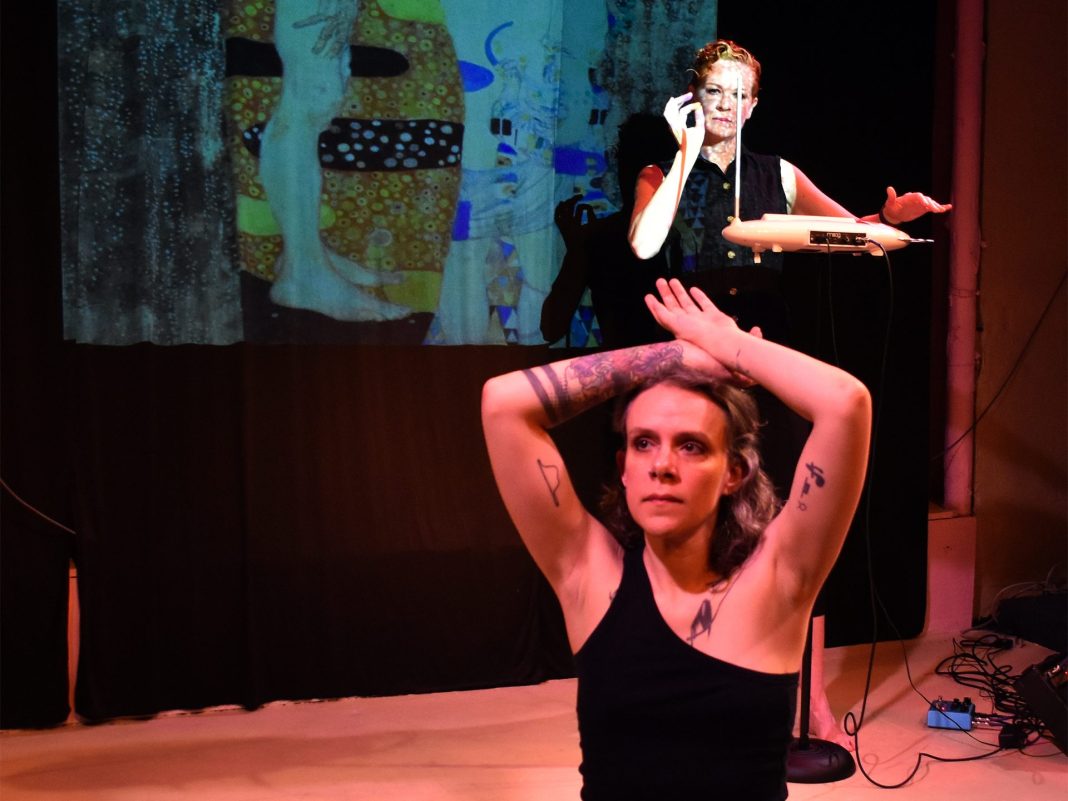★★★★☆
Timestamp is a part-theremin, part-dance exploration of womanhood, expectation, and time. Brought to the Edinburgh Fringe after a successful run in New York City by Emilee Lord and Karen Cecilia, it unpacks, in an hour, the ways in which the performers have dealt with being held to certain standards in their own lives, and asks us to reflect on how this pressure functions in ours.
The piece greets you with a rolling montage of women, including recorded interview extracts that discuss, among other themes, the pressures accompanying aging, and hypocritical standards of femininity. After this introduction, the performance begins properly with soft tones from the theremin, and choreography in a symbiotic relationship with the music. The choreography by Lord is wonderful to watch, her body seeming to flow with soft fluid lines, only to then contort into angular movements, evidencing a clear skill, control, and technique. Cecilia’s theremin somewhat responds to the ebbs and flows of Lord’s movement, and her intense gaze keeps the two performers in sync. I would have loved to see a more innovative use of the theremin, however, as I felt it was often more a tool for ambience than expression.
Lord’s dance is sandwiched between spoken word, art, and video material: the experience is broken up into small segments, with each subtly structurally different to the previous. The steady pace this provides ensures the audience’s interest, particularly engaged when Cecilia recounts the emotions generated by their mother’s death just before the first run of Timestamp in New York City.
This one moment of vulnerability encapsulates what I feel Cecilia and Lord aim to put across. The encounter between expectation and grief, where we ask what a lost relative desired for us, is one of the hardest and most insightful parts of their exploration. Asking whether the dead met their own aspirations for themselves reminds us of the fleeting nature of our own lives. Cecilia’s monologue becomes its own ‘timestamp’, a symbol drawn out to mark the specific moment of change, and feels incredibly brave.
In fact, the entire piece is connected by the notion of time and evolution. Projected camera footage displays digital timestamps of minutes and seconds onto the wall; a chalk drawing on the floor illustrates an unconventional clock where hours are replaced with ‘timestamps’ which aren’t always chronological. Unfortunately, the camera did not always capture the entire stage, and, if you weren’t sitting at the front, the artwork could be unclear from the footage alone. Nonetheless, we are left with an appreciation of the subjectivity of experience, and reminded of how personal the passage of time can be.
The performers establish a new timestamp: the present – the ‘now’. Instead of leaving us with a vague, impending message that we could procrastinate indefinitely, the use of ‘now’ makes it clear that we are to reflect in the moment. It reminded me that you can change and reflect on yourself at any time – it doesn’t have to be at the ‘right’ point.
Timestamp is a rounded performance that is accessible to anyone, even those who don’t count themselves versed in performance art and feminism. It left an important message behind: to begin reflecting on my own choices, and claiming full ownership of them, right now.


